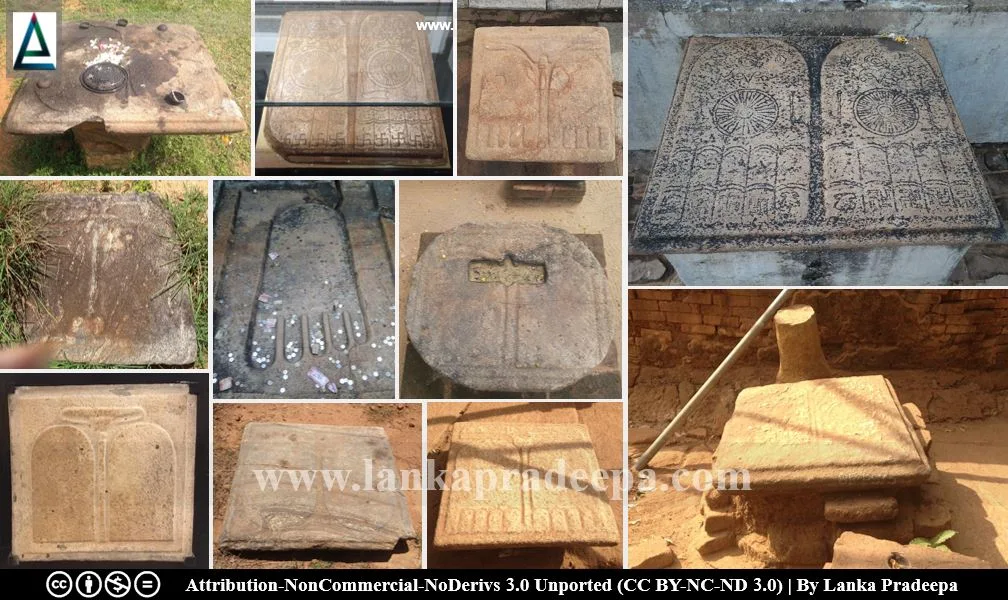
The sculptural representation of the two footprints of the Buddha's feet is known as Pada Lanchana (or Siri Pathul Gal/ Sri Pada Gal). They have been symbolically shown in sculptures or stone slabs placed in Buddhist monasteries to indicate the presence of the Buddha.
The pre-Christian sculptures of Sanchi, Bharut, and Bodhgaya in India always showed the presence of the Buddha by several symbols such as the empty throne, Buddhist wheel, Bodhi tree, trident and footprints (Narangoda, 2015). Even after the introduction of the Buddha image, ancient sculptors have used these symbols continuously as is evidenced in the sculptures of Amaravati and Nagarjunakonda.
Sri Lankan sculptors also appear to have preserved the tradition of worshipping the footprints during the Anuradhapura Period. The Sri Lankan tradition of worshipful places hallowed by the Buddha's imprinting of the feet such as Sri Padaya could well have influenced the worship of the footprints.
Footprints with different iconographic elements and various approaches which are found in Sri Lankan sites can be categorized as follows (Narangoda, 2015);
#) Single footprint in a rectangular slab
#) Footprint with no symbols or no medallion
#) Footprint with the parasol (Chatra)
#) Footprint with the parasol and the Wheel of Dharma (Dharmacakra) and the Swastika
#) Footprint with the parasol and the Trident (Trisula)
#) Footprint with Trident (Triśūla) the triple refuge or jewels (Triratna) and, the lotus bud (Padma)
#) Footprint with the cobra hood and the parasol
#) Footprint with more than 2 prints
It appears in the Sri Lankan monasteries that the blocks of stones
carved with the Buddha's footprints have been used as a votive object along the circumambulation path, or as a mark to demarcate a sacred area or as a relic depository (Narangoda, 2015). With regard to the first application above, the specimens are found from the Neelagiriseya, Dighavapi Stupa, and Vijithapura Viharaya (Narangoda, 2015). The demarcation of the sacred area by sacred footprints is evident at the Bodhighara No.03 of Anuradhapura where the buildings have been erected and developed under four kingships (Narangoda, 2015). The application of the sacred footprint as a relic depository is evident at Pada Lanchana Stupa of Anuradhapura and Kithsirimevan Viharaya of Kelaniya (Narangoda, 2015).
References
1) Narangoda, P., 2015. The Sacred Footprint (Buddhapāda) in Sri Lankan Buddhist Art. pp.1-14.
This page was last updated on 1 January 2023

